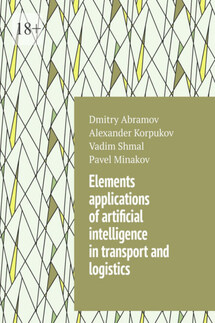Разработка Android-приложений с Augmented Reality - страница 15
import android.support.annotation.Nullable;
import android.support.v4.app.ActivityCompat;
import android.support.v4.app.FragmentActivity;
import android.view. Window;
import android.widget.Toast;
import com.beyondar.android.fragment.BeyondarFragmentSupport;
import com.beyondar.android. opengl. util. LowPassFilter;
import com.beyondar.android. world. World;
import com.google.android.gms.common.ConnectionResult;
import com.google.android.gms.common. api. GoogleApiClient;
import com.google.android.gms. location. LocationListener;
import com.google.android.gms. location. LocationRequest;
import com.google.android.gms. location. LocationServices;
public class SimpleCameraActivity extends FragmentActivity implements LocationListener, GoogleApiClient.ConnectionCallbacks, GoogleApiClient. OnConnectionFailedListener {
private BeyondarFragmentSupport mBeyondarFragment;
private World mWorld;
GoogleApiClient mGoogleApiClient;
Location mCurrentLocation;
LocationRequest mLocationRequest;
/** Called when the activity is first created. */
@Override
public void onCreate (Bundle savedInstanceState) {
super. onCreate (savedInstanceState);
// Hide the window title.
requestWindowFeature (Window. FEATURE_NO_TITLE);
setContentView(R.layout.simple_camera);
mBeyondarFragment = (BeyondarFragmentSupport) getSupportFragmentManager () .findFragmentById(R.id.beyondarFragment);
// We also can see the Frames per seconds
mBeyondarFragment.showFPS (false);
// We create the world and fill it…
mWorld = CustomWorldHelper.generateObjects (this, mCurrentLocation);
// … and send it to the fragment
mBeyondarFragment.setWorld (mWorld);
LowPassFilter.ALPHA = 0.003f;
buildGoogleApiClient ();
}
/**
* Builds a GoogleApiClient. Uses the {@code #addApi} method to request the
* LocationServices API.
*/
protected synchronized void buildGoogleApiClient () {
mGoogleApiClient = new GoogleApiClient. Builder (this)
.addConnectionCallbacks (this)
.addOnConnectionFailedListener (this)
.addApi (LocationServices. API)
.build ();
createLocationRequest ();
}
protected void createLocationRequest () {
mLocationRequest = LocationRequest.create ();
// Sets the desired interval for active location updates. This interval is
// inexact. You may not receive updates at all if no location sources are available, or
// you may receive them slower than requested. You may also receive updates faster than
// requested if other applications are requesting location at a faster interval.
mLocationRequest.setInterval (10000);
// Sets the fastest rate for active location updates. This interval is exact, and your
// application will never receive updates faster than this value.
mLocationRequest.setFastestInterval (5000);
mLocationRequest.setPriority(LocationRequest.PRIORITY_HIGH_ACCURACY);
}
@Override
public void onStart () {
super. onStart ();
mGoogleApiClient.connect ();
}
@Override
public void onStop () {
super. onStop ();
mGoogleApiClient. disconnect ();
}
@Override
public void onResume () {
super. onResume ();
// Within {@code onPause ()}, we pause location updates, but leave the
// connection to GoogleApiClient intact. Here, we resume receiving
// location updates if the user has requested them.
if (mGoogleApiClient.isConnected ()) {
startLocationUpdates ();
}
}
@Override
protected void onPause () {
super. onPause ();
// Stop location updates to save battery, but don’t disconnect the GoogleApiClient object.









